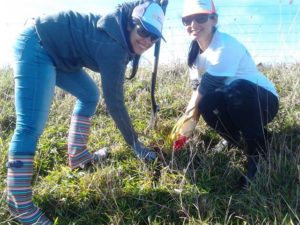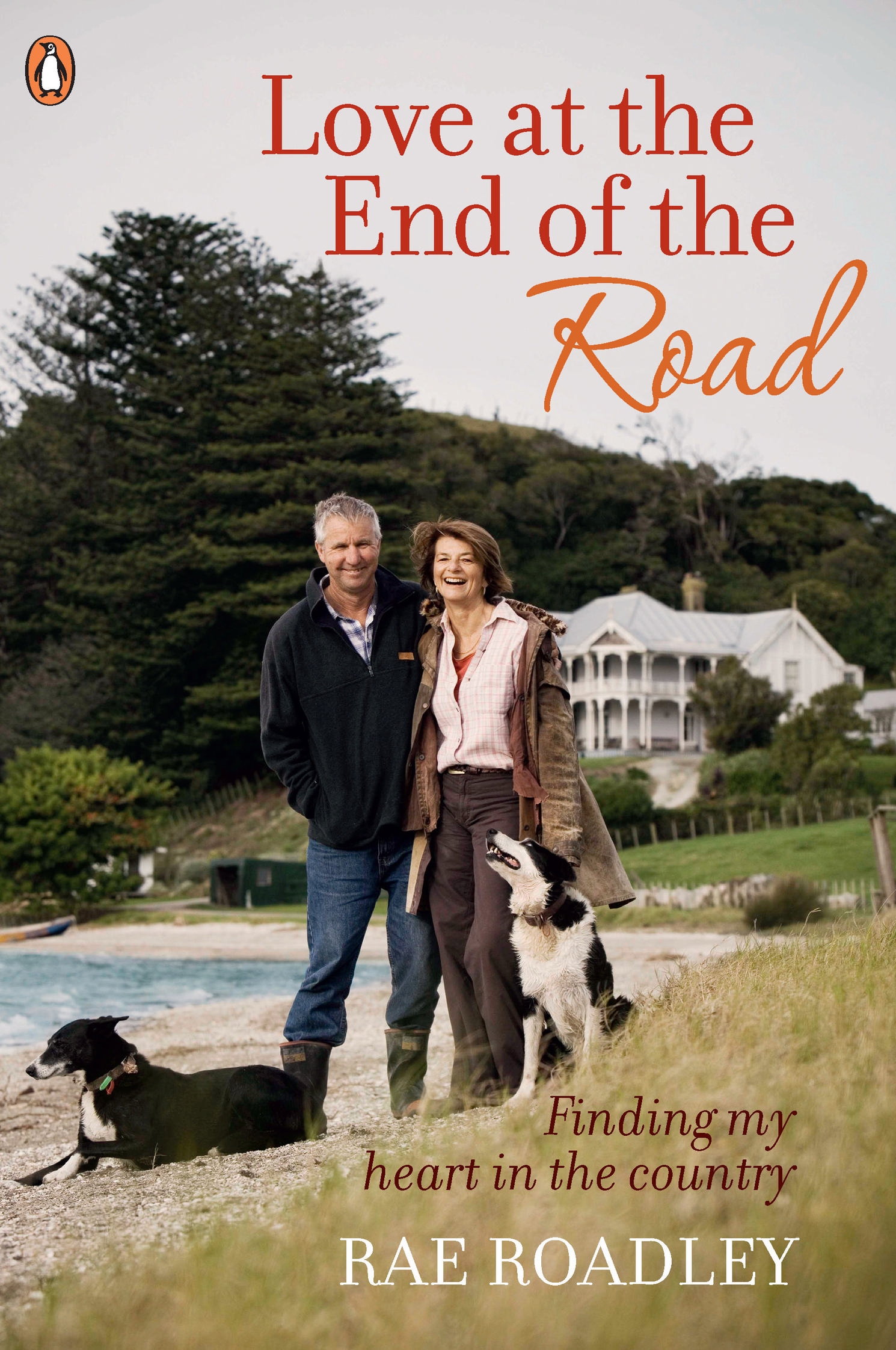
Spark staff, from left, Rachita Dahama and Gurpreet Jaura planting the coastline at Batley on the Kaipara Harbour.
People power to plant the edge of the largest harbour in the southern hemisphere is being provided gratis by one of our country’s largest companies.
Spark NZ, through its charitable arm the Spark Foundation, enables its staff to spend a day a year contributing to a worthy cause. Last week, 11 Spark people turned their attention to waterfront land at our place where hundreds of native saplings sat ready to be planted.
Mark Vincent, the initiator of Otamatea HarbourCare, which has a goal of planting many kilometres of harbour waterways, had grown them in his nursery with the help of volunteers. The week before Mark had attended another planting day, this one with children from diverse backgrounds. Although they were horticulture students, they turned up in school uniforms. No gumboots in sight.
We were luckier, despite many of our guests having begun life in other countries – or their parents had. Most were quietly spoken, making communication a test; when a young man waved a paper cup and said ‘Rubbish bin’, I thought he said ‘Aspirin’ and offered him a Panadol. We worked it out.
We also struck luck with the weather. Friday dawned still, clear and beautiful. Our guests arrived when the tide was in and began taking photos of our calm and glittering Kaipara Harbour.
While eating pikelets and muffins (cooked by the farmer’s mother), we introduced them to the place – they were beside the Otamatea River, the central arm of the harbour and in a house that began life in 1866. And that’s one reason Mark chose Batley for the first Spark Foundation day – we’re on the waterfront and the house and area abound with wondrous stories. The first settlers, for example, had seven daughters but only one reached adulthood. Twins were still born, three girls drowned and another died of pneumonia and is buried on the hill behind our house.
After planting, we served lunch to our rather exhausted guests. Practice has taught us that soup is the answer when feeding a large or unknown number of people. It can be eaten standing up if necessary and can cater for all diets. We served pea and ham, seafood chowder and Thai pumpkin.
While we were from different worlds, we women bonded over the pumpkin soup. It’s simple and delicious. First, split your pumpkin. This doesn’t need a knife or the slightest effort. Drop your pumpkin, with force, on a hard surface like your concrete drive or path. It will break in two, easing the business of cutting it into pieces.
Already another batch of pea and ham soup is in the freezer and I’m primed to crack another pumpkin on our concrete courtyard. Our second group of Spark volunteers is due soon.
Margaret’s Thai Pumpkin Soup
(I name recipes after those who give them to me – our visitors took away a recipe for Rae’s Thai Pumpkin Soup.)
1.5 kg pumpkin (I bake the pieces, cool then peel them).
2 onions, chopped
3 stalks celery, chopped
4 cups chicken stock (use vegetable stock to cater for vegetarians)
1 Tb red curry paste (Gregg’s is good and the only one I use)
Simmer the lot, whizz till creamy then add a can of coconut cream. It is especially lovely with coriander sprinkled atop its surface.




Amy
June 14, 2016 at 7:42 am (UTC 13) Link to this comment
Thats awesome, I love stories like this where the Kaipara is being well looked after in this way. I miss this region having lived in Maungaturoto and Mangawhai for 20 years alot so thank you for the updates 🙂